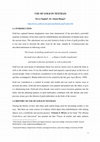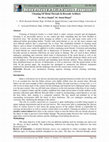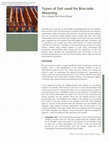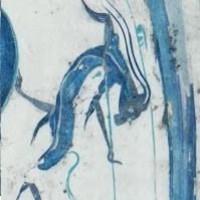Papers by DIVYA SINGHAL GUPTA

"This volume has been developed with an aim to provide an authoritative overview of dive... more "This volume has been developed with an aim to provide an authoritative overview of diversity management in Asia. Although the Asian context appears at first sight to be irreconcilably divergent in terms of diversity management approaches, in this volume we seek to explore thematic and geographical demarcations of the concepts of diversity and equality at work. The aim is not only to examine diversity management in a particular geography but also to make a marked contribution to the theory of managing diversity and equality by revealing the significance of context, time and space in framing policies and practices of management. Following the call by Bell and Kravitz (2008), we have attempted at bringing together studies which theorise practice of diversity management, in order to help close the gap between practice and theory in this field in Asia. The volume, therefore, offers in the main an evidence based approach (Özbilgin and Tatli, 2008) in theorisation of diversity management. With empirical and conceptual contributions from eminent scholars from across the Asian continent as well as the Asian diaspora, this volume provides a text that allows us to understand practices of equality and diversity management in settings across Asia and also to understand the key drivers and implications of such practices. The volume examines cultural diversity management from multiple angles; whilst some chapters examine diversity management in domestic firms in Asian countries, others examine it from a cross-cultural or international perspective. Cultural diversity is a consequence of different assumptions which underpin the logic of practice at work. The Asian setting provides a unique site for studying cultural diversity as Asia is the birthplace of many socio-religious discourses which underpin the way work and life is organised in contemporary societies. The first 19 chapters (besides introduction) in this volume deal with cultural diversity management in Asia. The volume also contains three chapters on the Asian diaspora, exploring diversity of and among Asian migrants in other continents. "

Asia InCH, 2017
Gold has captured human imagination since time immemorial. It has provoked a powerful response in... more Gold has captured human imagination since time immemorial. It has provoked a powerful response in humans. It has been used for embellishment and adornment of the human body since ancient times. This adornment was not only limited to the body in form of gold jewellery but it was also used to decorate the attire worn by the man. Gold was one such means of adornment which was used in various ways to adorn the body as well as the clothes worn. It was the noblest metal and enjoyed a special place in the lives of ancient people. Gold was considered as a symbol of royalty and wealth and was used in various ways to decorate the fabric. Gold and silver pigments were painted and printed onto the fabric to give it a shimmering look. Gold and silver threads were used to weave luxurious patterns into the fabric and the glittering patterns of gold embroidery combined with silk threads and semi-precious stones gave the illusion of gold embroidery on the body of the wearer. This paper discusses the use of this precious metal in different forms, to decorate & ornament textiles since ancient times.

Research Journal of Social Science & Management, 2018
Cleaning of historical textiles is a field which is under constant research and development. Clea... more Cleaning of historical textiles is a field which is under constant research and development. Cleaning is an irreversible process as one cannot put back something that has been brushed or dissolved away. The decision about cleaning an artifact is not easy and many issues need to be addressed before proceeding further. Textiles with metal threads or zari are the most common and most difficult artifacts that a conservator has to clean. The established methods of cleaning metal objects, such as theuse of polishing powders or the chemical removal of stains or corrosion from the surface, in most cases cannot be applied to textiles containing metal threads. Corrosion and tarnishing of metal threads are caused mainly due to thepresence of moisture in theair, which is why Indian brocades present in museum collections are more prone to damage. The zari used in these artifacts undergoes tarnishing and corrosion which leads to deterioration of the metal thread as well as the surrounding fabric. The present paper gives an exhaustive list of possible chemicals which can be used for the purpose of removing corrosion and tarnishing from brocade artifacts. These chemicals have been shortlisted based on areview of theliterature as well as interviews with the professionals in this field. In the present paper, the researcher has attempted to summarize the different treatments employed for metal threads and the challenges faced by the conservators in this process.

TCRC E-Journal, 2017
Zari means the gold or silver wire which is used as the main raw material in weaving of a brocade... more Zari means the gold or silver wire which is used as the main raw material in weaving of a brocade fabric. According to the literature, the term Zari is derived from a Persian word Zar which means gold and the history of zari manufacturing is as old as that of Indian silk. Historically, Surat and Banaras have been the major centres for production of zari. The present paper discusses the development in types of zari produced over the years as well as the manufacturing techniques involved in production of zari in the above two centers. Data collection was done using interview and observation methods. The increasing cost of precious metals during 1930s and the upkeep required to keep the articles intact led to the innovations and inventions both in the terms of raw materials utilised and the production methods. The problem of tarnishing and corrosion of zari steered a need for finding ways to solve this issue. Use of lacquer coating was initiated to prevent the metal from coming in direct contact with moisture and air. Meanwhile, introduction of electricity led to the invention of electroplating which made it possible to use other metals like copper to be used for making of zari. Many different types of zari like powder zari, tested zari, plastic zari and imitation zari were developed. These had better performance properties and required less care and maintenance. With the introduction of plastic zari or lurex yarn during 1960s the colour of zari produced was not limited to gold and silver only. Production of variety of colours like green, red, orange, blue was also made possible. The lacquer coated zari and plastic zari did not have the problem of tarnishing thus making it the most common type of zari to be used in the past four to five decades. It was seen that due to the increased use of imitation zari, manufacturing of real silver zari is on decline resulting in production of a fabric which does not have the luxury and glory of a pure zari brocade.
Conservation of Cultural Property in India, 2013
The present article emphasises wet cleaning as an aid to conservation. Textiles being organic in ... more The present article emphasises wet cleaning as an aid to conservation. Textiles being organic in nature deteriorate easily. There are many factors like light, temperature, humidity, dirt, dust, stains which are responsible for the degradation of antique textiles. Thus, the role of museums in the conservation of textile heritage is very important. Wet cleaning is an important part of curative or remedial conservation. An attempt was made to develop standardized methods for wet cleaning of cotton artifacts using some indegineous cleansing agents: distilled water, Reetha ( Sapindus Mukorossi) and soap.











Uploads
Papers by DIVYA SINGHAL GUPTA